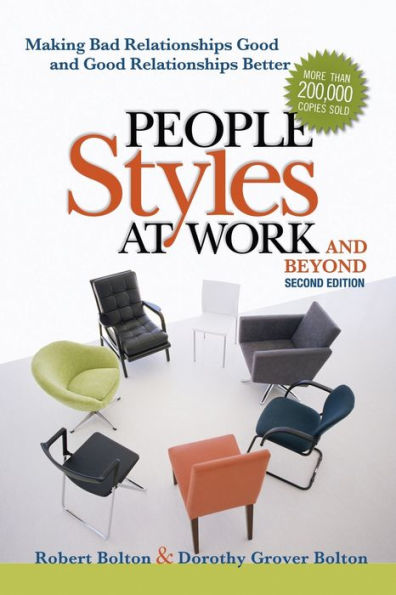Read an Excerpt
INTRODUCTION
BOTH AT WORK and at home, success and happiness depend on relating to others across a chasm of significant differences. If you could figure out how to bridge the gap between yourself and others, you could make your life—and theirs—much easier, happier, and more productive. How to do that is what this book is about.
The differences between people are a major source of friction. For example a our friend Michelle does everything in a rush. She walks fast a talks fast, decides fast. And she completes projects in a flurry. As luck would have it, she’s often teamed with John, who is very deliberate.
John walks slowly, talks slowly, decides slowly. Although these differences may not seem like a big deal, if they’re not managed well they’re likely to erode Michelle’s and John’s working relationship. You’ve undoubtedly seen how differences like these can undermine cooperation a hamper performance, and add considerable stress to people’s lives.
This book shows how you can manage those kinds of differences in ways that enhance your relationships, increase your productivity, and add richness and spice to your life. It’s about making people differences work for, rather than against, you.
There are three parts to the book:
• Part One: Understanding Yourself and Others
• Part Two: Style Flex: A Key to Improved Relationships
• Part Three: People Styles and Family Relationships
Part One: Understanding Yourself and Others provides a pragmatic way of understanding the differences between people. Rather than delve into esoteric psychological theory, it provides a straightforward, practical explanation of what you need to know to relate more effectively to others.
Chapter 1 notes some of the differences between the four people styles and how those differences can lead to people problems. Chapter 2 describes the people styles model and explains how it can help you relate more effectively to people very different from yourself. Chapter 3 helps you capture data for identifying your own style. The two dimensions of behavior that are key to understanding yourself and others are highlighted in Chapter 4. With this background, Chapter 5 guides you through an assessment that shows how you come across to other people.
The four people styles are described in Chapters 6 and 7. Chapter 8 depicts each style’s tendency toward certain strengths and weaknesses.
Chapter 9 describes backup styles—the four dysfunctional and relationship-straining ways in which people of each style react to excessive stress.
In Chapter 10, you’ll learn how to cope productively both with your own and with other people’s stressed-out behavior.
Part Two: Style Flex: A Key to Improved Relationships shows how to create more productive interactions by applying the knowledge of yourself and others gained in Part One. Chapter 11 introduces you to style flex, a way of creating common ground with people very different from yourself. Style flex is the intriguing ability to be true to yourself while relating to someone else on that person’s wavelength. The four steps involved in flexing to another person’s style are presented in Chapter 12. In
Chapter 13, you learn how to identify another person’s style. Chapter 14
describes how to use style flex in several special situations. The final chapter of Part Two describes basic flex—three personal qualities that undergird style flex.
Parts One and Two are equally applicable to personal and work relationships.
However, the people styles model has some unique and beneficial applications to personal relationships. So Part Three: People Styles and Family Relationships discusses applications of the people styles model to two of these types of personal relationships. Chapter 16, ‘‘The Art of Loving Someone Very Different from Yourself,’’ shows how to forge an even better relationship with your domestic partner. In Chapter 17, you’ll find style-based parenting guidelines that will help you have more enjoyable relationships with your kids while helping them increase their selfesteem and develop their unique strengths.
There are four appendices—one for each of the four styles. The appendix for your style presents specific guidelines on how to flex to persons of each of the four styles.
Many of the concepts in this book will come not as news but as reminders. We’re often told that this way of organizing interpersonal data helps people sharpen insights they’ve already gained from their life experience.
This familiarity makes it easier for readers to implement the relationship-enhancing methods found in these pages.
We hope the concepts and methods presented in this book will enrich your life and relationships as much as they’ve enhanced ours.






